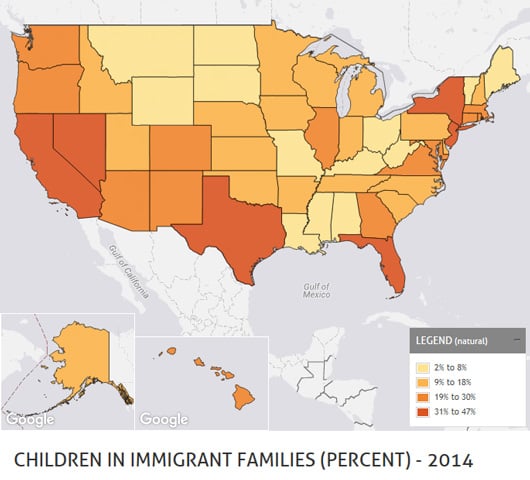Statistical Snapshot: Kids in Immigrant Families in America Today

One in four kids in America — 18 million children total — hailed from an immigrant family in 2014.
Within this population, 24% of kids had parents without a high school degree and 21% lived in linguistically-isolated households. Both of these statistics can place kids at a disadvantage as they move into adulthood.
Kids in immigrant families are more likely to grow up with married couple parents (74% versus 61% for their U.S.-born peers). At the same time, their parents are more likely to earn lower wages, and their mothers are less likely to be employed. Just 47% of kids in immigrant families have a mother who works compared to 58% of their U.S.-born counterparts.
Most kids in immigrant families are U.S. citizens (90%) and their families have lived and worked in America for more than five years (97%).
California (47%), Nevada (37%) and New Jersey (36%) have the largest share of kids in immigrant families, while West Virginia (2%), Mississippi (4%) and Montana (5%) have the smallest.
Visit the KIDS COUNT Data Center for more state-level and national statistics on kids in immigrant families.
- Children in immigrant families
- Children in immigrant families by parent’s region of origin
- Children in immigrant families who are U.S. citizens
- Children in immigrant families in which resident parents are not U.S. citizens
- Children in immigrant families whose resident parents have been in the country five years or less
- Children whose parents all have less than a high school degree by family nativity
- Children living in linguistically isolated households by family nativity
- Children in immigrant families in which resident parents have difficulty speaking English
- Children who have difficulty speaking English by family nativity
- Children in married-couple families by family nativity
- Children in single-parent families by family nativity







